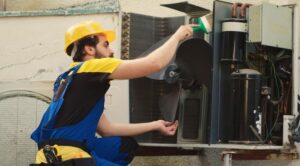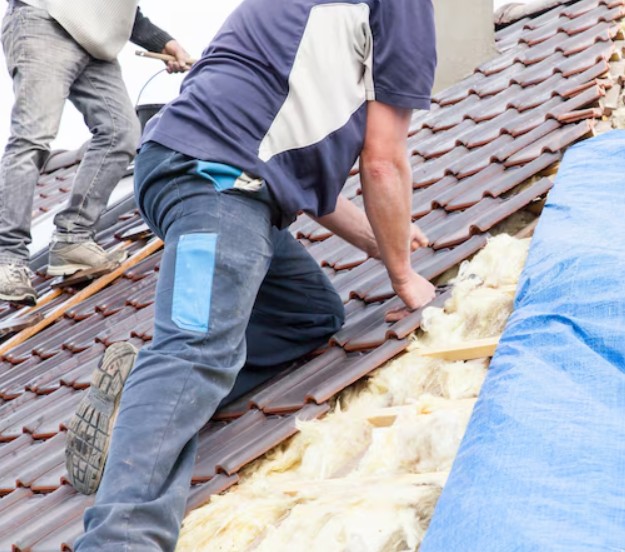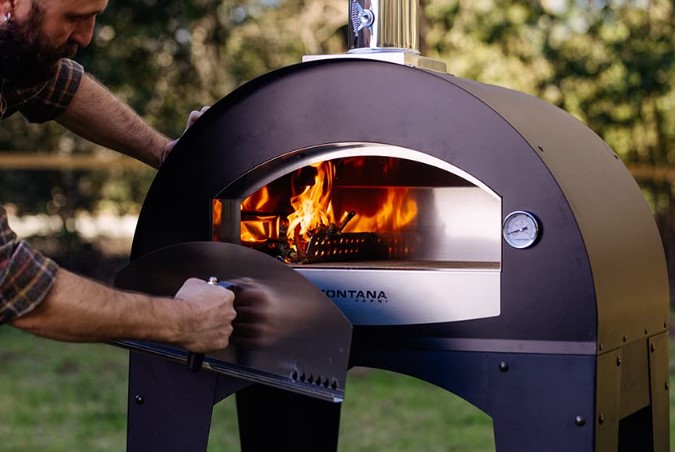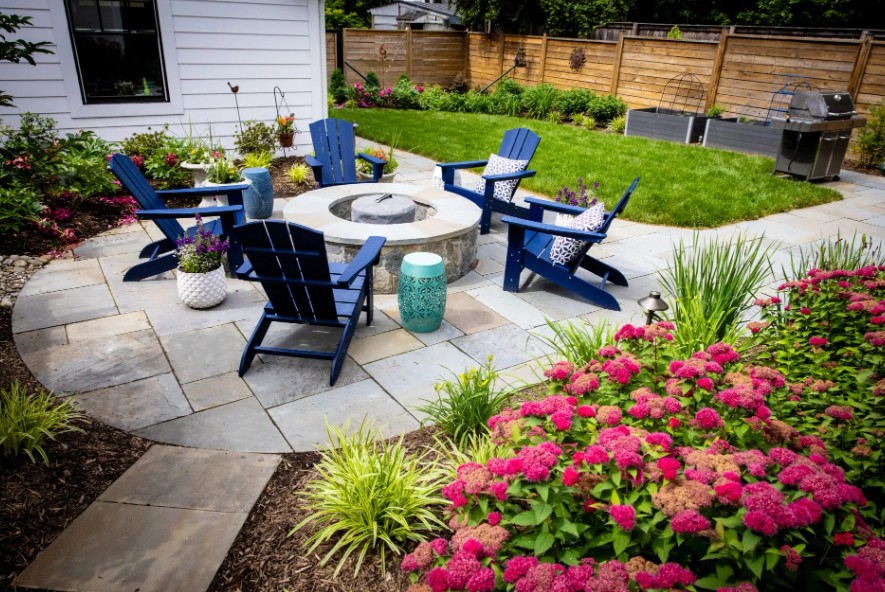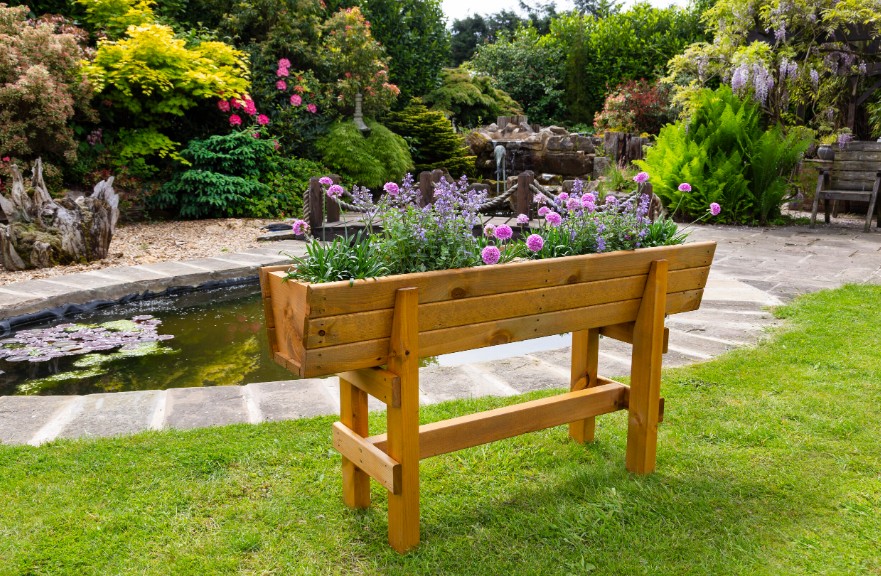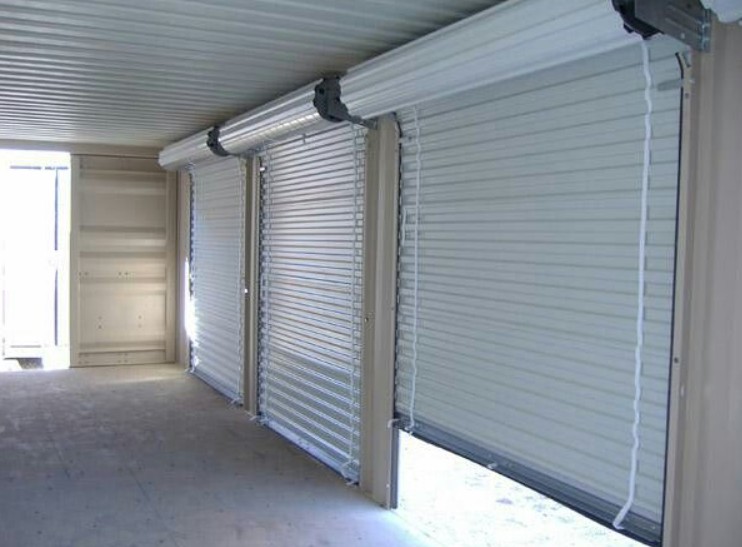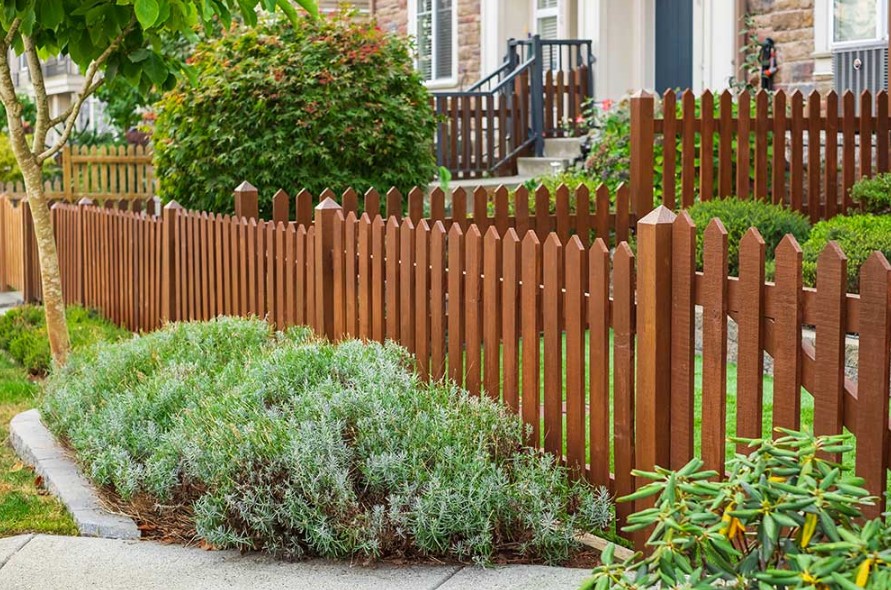The best online interior design services and landscape design services of 2022
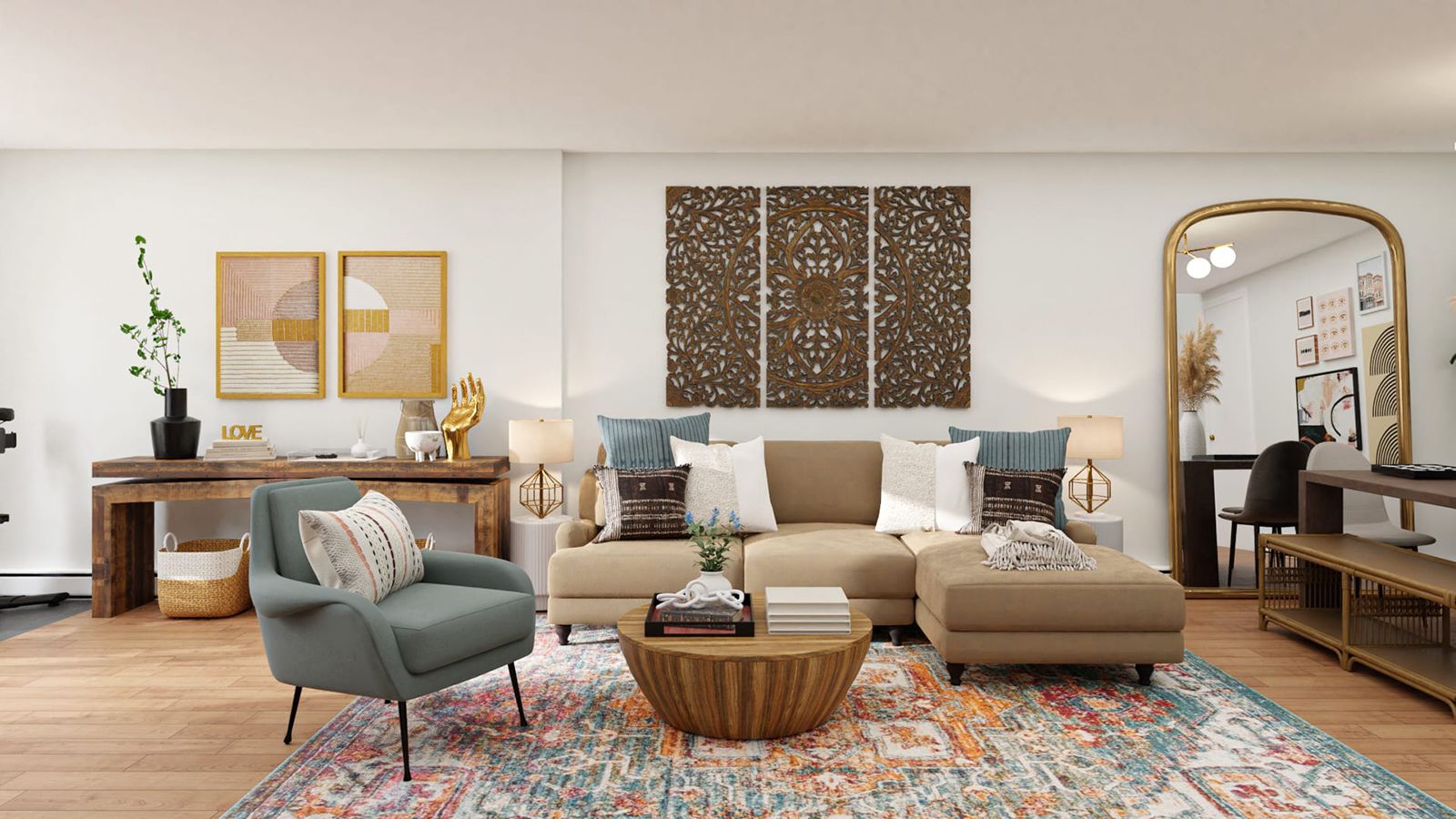
Online interior design services and landscape design services — which connect you remotely with designers and give you detailed plans or referrals to local contractors to complete the job — offer a convenient way to transform your space. While working with an interior or landscape designer remotely means you won’t get an in-person site visit and your design professional will be working from photos, the process can be faster and less expensive than working with local vendors, plus you aren’t limited to designers who live within driving distance of your project.
We tested the services of nine different online design firms, giving them all identical briefs and budgets. We found a few companies that stood apart from the rest, delivering concepts we can’t wait to bring to life and leaving us dreaming about which rooms we want to attack next.
Best online interior design service overall
A process that gives you two creative, resourceful designers to choose from, flexible furniture sourcing, a quick turnaround and the best and most useful 3D mock-ups of any service make Decorilla the gold standard among online interior design services we tested.
A more affordable online interior design service
Slightly less expensive than our winner, Modsy has a roster of thoughtful, experienced designers and software that allows you to swap furniture in and out of the final rendering, resulting in limitless options.
Best online landscape design service
Knowledgeable landscape designers start with your property survey and apply extensive knowledge of local plant life to transform your back or front yard. Its package also includes detailed project plans to hand off to any landscape contractor (if you’re using one).
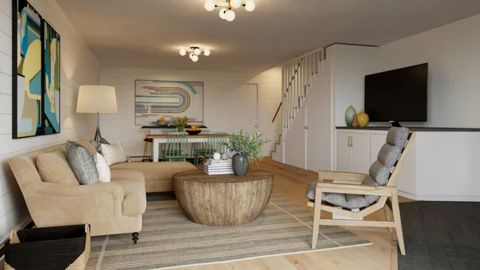
The process begins with a “this or that” decor quiz where you rate finished room designs, then — uniquely among the services we tested — based on your preferences you get partnered with two different designers compatible with your style preferences. After a few clarifying questions, both designers take a pass at an initial mood board. In our case, it was difficult to choose from the excellent designs, but we ended up deciding on the designer who lived in the area in which our specifically requested, somewhat niche regional style originated: the Pacific Northwest.
We discussed layout and tweaked his suggestions slightly. Our designer was very responsive, usually coming back to us within a day. We loved that Decorilla allows designers to include Craigslist/Facebook Marketplace finds in the room plan. We wanted a bar, and a brand-new sit-down version felt like expensive ($2,000+) overkill in our casual hangout space. Instead, our designer scoured local, pre-owned inventory to find a vintage bar. When he found the perfect $175 option, he suggested we paint it to align with our color palette and worked it into the plan. Our Decorilla designer also went far beyond the expected chairs and rugs, suggesting wall treatments (subtle shiplap), demo (removing some parts of our existing dated built-ins) and electrical work (swapping out fluorescent lighting for pretty, flush-mount fixtures). The estimated contractor fees were also included in our final budget.
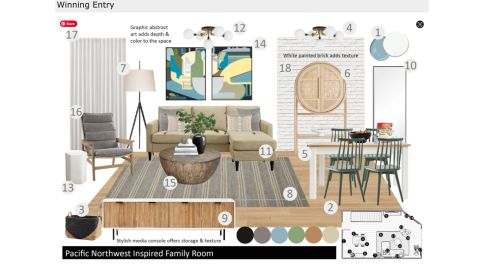
Once you’ve aligned and approved the room components, the design team builds a 3D rendering. This step is a game changer and the best way to understand how the design recommendations will work in your actual space. Not all online interior design companies offer this as part of their package, and if they do, they are not all created equal. The Decorilla 3D rendering allows you to see every piece of furniture (including existing items you’re keeping) from virtually any angle. This even included showing how natural light will hit, which we found essential. After seeing the room design in the rendering, we asked for a few furniture swaps, including a less expensive chair. Our designer came back with a handful of thoughtfully selected alternatives that were all under $800, including one from Wayfair that was under $200.
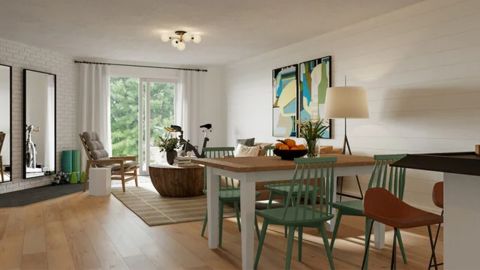
Once you’re happy with your design and total budget, you can shop for the recommended items themselves right on the Decorilla site. The company passes along a trade discount, which it says can be as high as 45{30865861d187b3c2e200beb8a3ec9b8456840e314f1db0709bac7c430cb25d05}. The discounts on the items in our design seemed to hover around 10{30865861d187b3c2e200beb8a3ec9b8456840e314f1db0709bac7c430cb25d05}, which may have been because our total project budget wasn’t huge. Decorilla places your orders, communicates with you about shipping timelines and also helps facilitate any necessary returns.
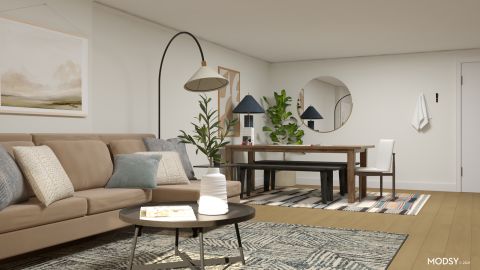
The Modsy process also begins with a quiz, though the site experience (and load time) was a little clunkier than Decorilla’s. After determining our aesthetic preferences, we were paired with one designer and heard from her the following day. After a few questions, she scheduled a Zoom call to go through her initial suggestions just a few days later. She was professional and helped guide us through the Modsy design timeline as well as a PowerPoint deck, which included a full-color room layout and a first pass at the room design. We appreciated this structured, hybrid approach rather than all messaging and appreciated a forum to ask questions and understand the thinking behind her design recommendations. It also allowed us to more easily riff and tweak elements of the design together.
Though the budget tally wasn’t in the initial presentation, our designer shared it in a follow-up message. This led to the disappointing discovery that we were over our stated range, but a few swaps brought us into the right ballpark. The Modsy package includes unlimited revisions, though we needed only a few.

Like many of the other online interior design companies we tested, the 3D renderings we got from Modsy allowed us to get a better sense of the proposed design. A 360-degree option also lets you click your way through the virtual plan, and you can mouse over each design choice (i.e., the white dots above) to learn more about the selection, including product name, price, vendor and more. The Modsy renderings were not quite as realistic or detailed as the Decorilla versions, but they were a close second, and they allowed the same ability to see how things would look in our home. One helpful and unique feature of the Modsy refinement process: The software allows for automated updates to the 3D renders using a “swap” function. This means you can pick an alternative furniture item and with a few clicks quickly see how it looks in the space without having to send the whole thing back to be re-rendered.
Modsy also came in $200 cheaper than our winner (we did the Luxe package, which starts at $499 per room), and it offers a $159-per-room option where you can opt to work with a more junior designer, which, depending on your project, may be all you need.
Best online landscape design service: Bacqyard ($796, including 3D renderings, up to a half acre)
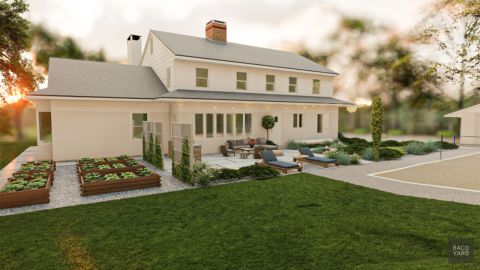
As with the interior design projects, the Bacqyard process began with a quiz as well as a review of our plot and the design brief. The designer was incredibly knowledgeable about local/native plants and what might work best in our clayish soil. Throughout the process, we would get email updates from Bacqyard: “This email is confirmation that your designer has started work on the project“ or “Your design team is putting together the final details of your Version 1 design and will have it over to you in the next few days.“
We received the concepts after a few weeks, and were blown away. Again, the 3D renderings make it simple to understand what the project will look like in real life. The design incorporated all our asks beautifully and effortlessly, from soft exterior lighting, to a small modern water feature, to a place for the kids to play volleyball with friends. There were a few misses that a local landscape designer might have caught, like the absence of any kind of fence around the vegetable garden (without a fence, our seedlings would be instant deer dinner), but those were easy to correct.
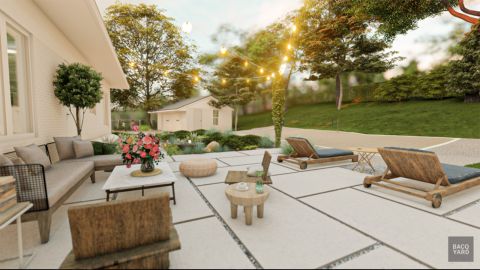
In addition to the incredible 3D renderings you also get a “contractor plans” packet, which is soup-to-nuts everything you need to execute your project: 2D CAD plans, specific plant and material lists, furniture recommendations — the works. Armed with a packet like this, it would be incredibly easy to solicit bids for doing the work (or use it as a guide to a DIY project).
We sent each company the same design brief and budget. For the interior designers we looked to reimagine a basement entertainment space, and for the landscape designers we focused on a half-acre backyard. Depending on the service, we followed up the design quiz and brief with a video call, in which we did a walk-through of the space.
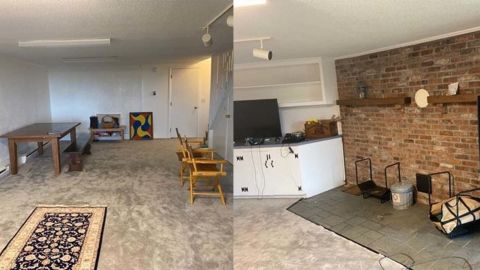
In each case, after going through the design process we went back to the designers with a few tweaks to understand how the revision process worked.
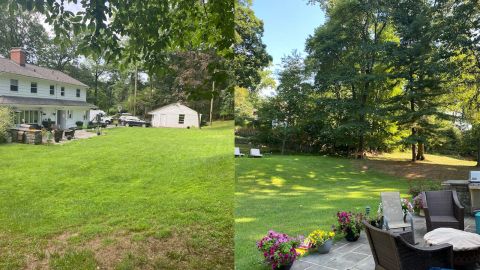
- Sign-up interface: Design quiz, uploading inspiration ease, general site UX
- Communication: Clarity of communication and direction, response time
- Timeline: Adherence to timeline and turnaround time for revisions
- Alignment to brief: Incorporation of existing furnishings/structures, incorporation of functional requirements, use of desired colors/design elements
- Alignment to budget: How well the final plan stuck to budget
- Variety of furnishings: Did the furniture and decor suggestions represent a wide variety of brands, or did the designer push selections toward one retailer or another? Who did the best job including high and low options?
- Revisions: Were enough included in the price? How well did the designer tweak the initial designs and listen to feedback?
- Creativity: How well did the designer understand the style direction to find options, how well did the designer present innovative solutions to issues and how well did they come up with unique suggestions?
- Quality of renderings (some plans come with mood boards and others with 3D renderings): How well did the final visuals capture the space? How well are we able to visualize the plan with the designs?
- Overall value for money: Did the service provide plans that were worth what a user would pay, compared to other local options?
- Local expertise (landscape design-specific): How well was the landscape designer able to speak to and address issues related to the local ecosystem despite not necessarily being located here? How well did he/she understand/suggest native plants and fixes for hyperlocal issues (deer, groundhogs, drainage, etc.)?
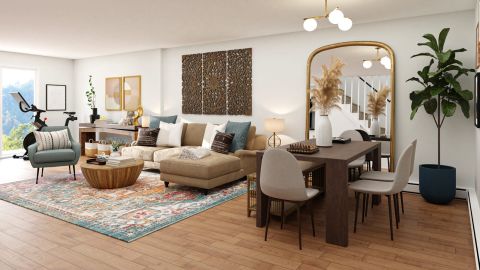
Decorist ($599; Elite room design)
We were matched with a talented and responsive designer from Decorist who, after reviewing the brief, sent through two different visions for the room, both of which included creative and functional solutions. Despite the great design, the final deliverable in the Decorist process is a 2D rather than 3D rendering, which was less useful in planning than the others we tested.
Space Joy ($299; Bliss package)
The Space Joy designers were extremely creative, and the package was economical compared to others we reviewed (i.e., you get a 3D rendering for less than $300). The process begins with two approaches and you select one. We loved both designs but didn’t find them distinct. Space Joy also has limitations related to the companies it can include in the final plan, which was ultimately the main reason it didn’t take a top slot in our testing. If this isn’t an issue for you, Space Joy would make a great pick.
Havenly ($129; Havenly Full package)
This process felt more formulaic than many of the others, but it was also the most affordable. Once you complete the quiz, you pick the designer from a handful of choices based on their styles. We decided not to select the designer who was (theoretically) a 99{30865861d187b3c2e200beb8a3ec9b8456840e314f1db0709bac7c430cb25d05} match, but instead chose a 96{30865861d187b3c2e200beb8a3ec9b8456840e314f1db0709bac7c430cb25d05} match because we liked their work better. And because our designer was based outside the US, we enjoyed seeing a different perspective. Ultimately, the design ideas didn’t stand out as much as some of the others.
Collov ($159)
This service seems like a great value with a price of $159 and a 3D rendering, but we ultimately didn’t think the quality and creativity of the final designs was comparable to the other services we worked with.
Tilly ($525; Pro Back Package, backyard design)
Tilly was a close runner-up in the landscape category and slightly less expensive than our winner. The process starts with a land survey here, so if you don’t have one, you’re out of luck. Our designer was incredibly knowledgeable and had an impressive educational pedigree, and since she also happened to be somewhat local, she had an encyclopedic knowledge of native plants, ultimately steering us away from hydrangeas, for instance, to avoid the heartbreak of watching them become deer dinner. Revisions are submitted right on the platform where you can write a note and also include images to help guide the next version.
Home Outside (starting at $199; 1-hour landscape design session)
The experienced Home Outside landscape designer came to our video meeting having studied the brief and assembled a Pinterest board with suggested native plantings. Together we looked at the Google maps of the backyard and she used a mark-up program to sketch right on the overhead image. She came with some great ideas and didn’t mind listening to our requests (could we add some birch trees?). She deduced that we had a wet yard, and her recommendations incorporated ways that our planting choices could remediate. The sketched asset with the ideas from this meeting was the final design deliverable with this step. With Home Outside, everything is essentially à la carte (it doesn’t offer flat-fee design packages), and this initial consultation is the beginning of a process, which later includes a recommendation and estimate for next steps, such as a 3D rendering and work plan. This is a great option if you know exactly the help you need, allowing you to customize the partnership.

